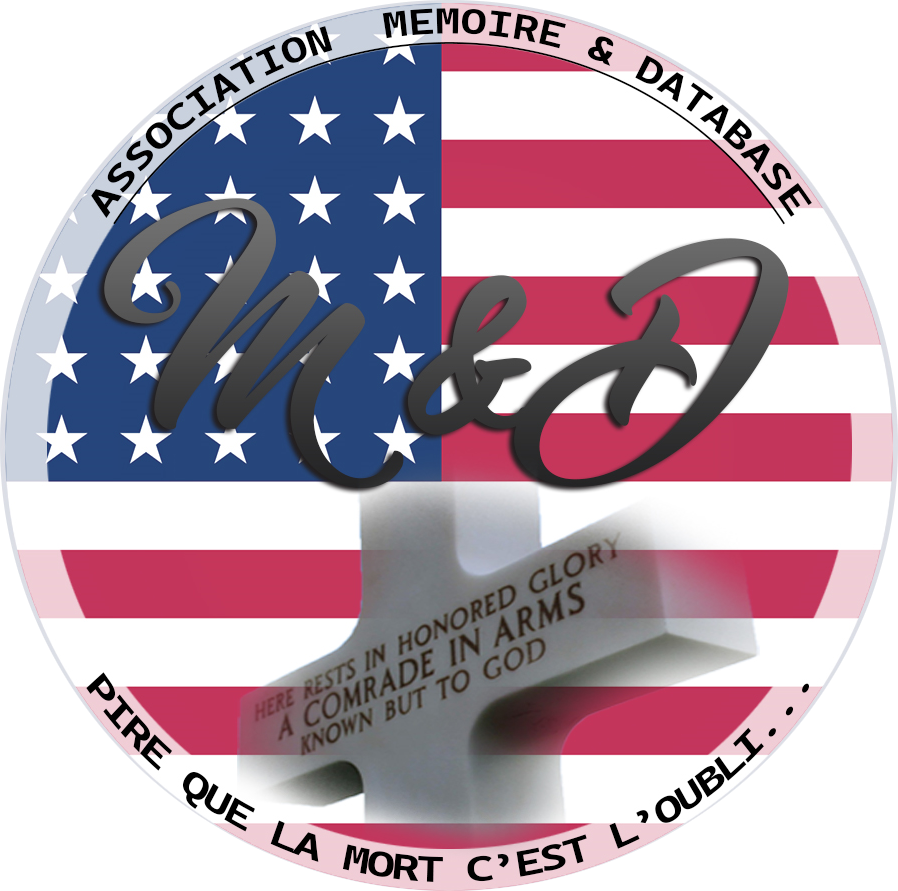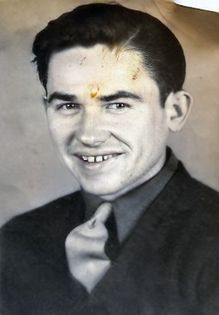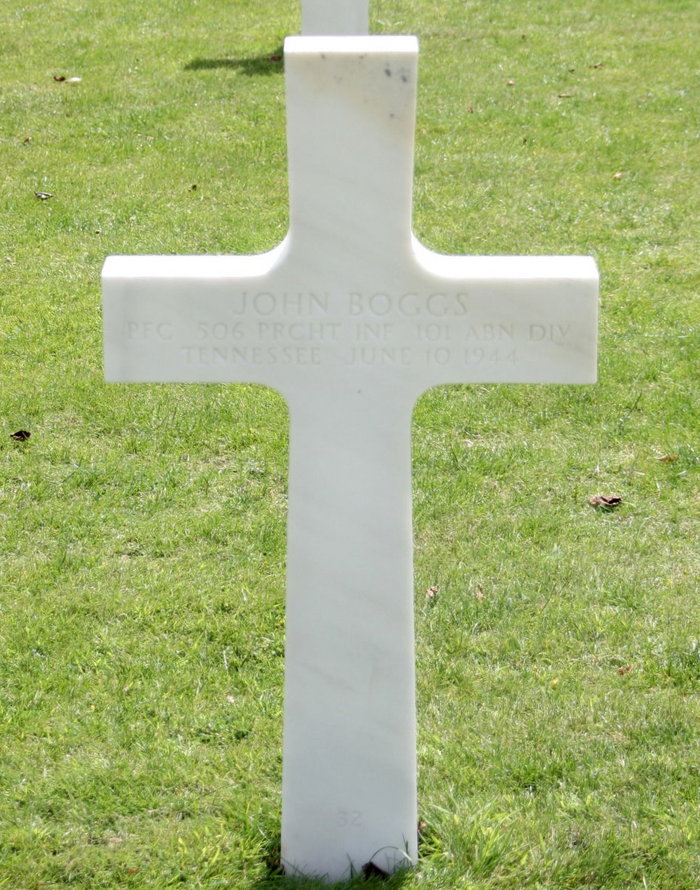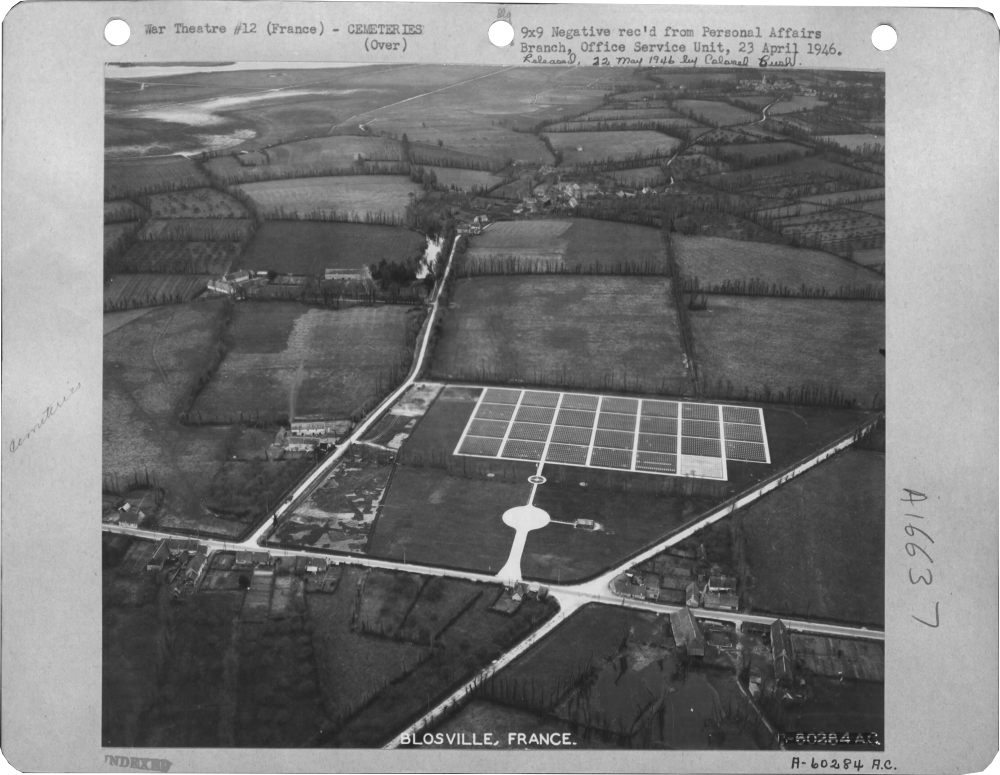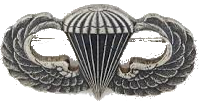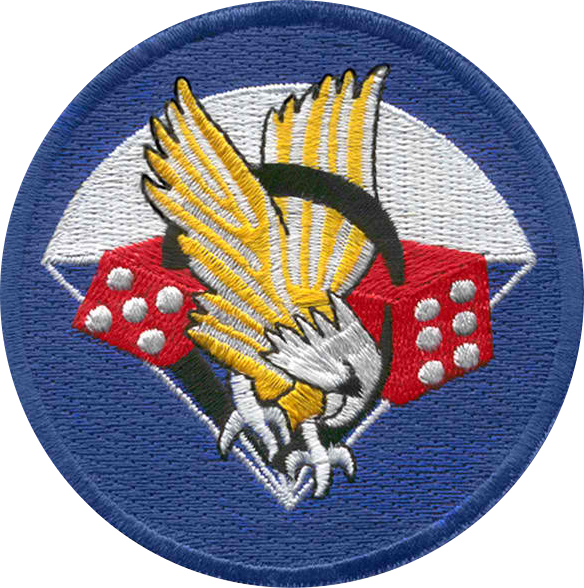|
John Lee BOGGS
“Johnny”
| ||||||||||||||||||||||||
|---|---|---|---|---|---|---|---|---|---|---|---|---|---|---|---|---|---|---|---|---|---|---|---|---|
|
Source : Allen D. Jackson, USAF (Ret)
| ||||||||||||||||||||||||
| NUMBER OF SERVICE | 14156528 | |||||||||||||||||||||||
| AGE | 25 yo | |||||||||||||||||||||||
| DATE OF BIRTH | 6 aout 1919 Elliott County, KENTUCKY | |||||||||||||||||||||||
| ENLISTMENT STATE | TENNESSEE | |||||||||||||||||||||||
| FAMILY |
Spouse : Marie Louise BRIEN Parents : Susan & Henderson Sherman BOGGS | |||||||||||||||||||||||
| RANK | Private First Class | |||||||||||||||||||||||
| FONCTION | Paratroopper | |||||||||||||||||||||||
| JOB BEFORE ENLISTEMENT | Unskilled sawmill occupations |  | ||||||||||||||||||||||
| DATE of ENLISTEMENT | 22 September 1942 Camp Forrest TENNESSEE | |||||||||||||||||||||||
| COMPANY | Company | |||||||||||||||||||||||
| REGIMENT | 506th Parachute Infantry Regiment | |||||||||||||||||||||||
| DIVISION | 101st Airborne Division | |||||||||||||||||||||||
| DATE OF DEATH | 10 June 1944 |
Source : Allen D. Jackson, USAF (Ret)
| ||||||||||||||||||||||
| STATUS | KIA | |||||||||||||||||||||||
| PLACE OF DEATH | ||||||||||||||||||||||||
| CEMETERY TEMPORARY |
CEMTERY TEMPORARY of Blosville N°3508
| |||||||||||||||||||||||
| CEMETERY | NORMANDY AMERICAN CEMETERY of Colleville | |||||||||||||||||||||||
| GRAVE |
| |||||||||||||||||||||||
| DECORATION |
| |||||||||||||||||||||||
| ||||||||||||||||||||||||
| STORY | ||||||||||||||||||||||||
|
John was born in Little Fork, Elliott County, Kentucky on 6 August 1919. His father died the next year (1920) and his mother remarried. The family moved to Johnson City, Washington County, Tennessee, the place John called home. He was working for the Miller Brother's Lumber Company here when he enlisted in the United States Army on 22 September 1942 at Camp Forrest in Tullahoma, Tennessee. He completed Basic Training at Camp Forrest and then volunteer for Airborne (Paratrooper) Duty. John was dispatched to Camp Toccoa, Georgia, where he would be assigned to Company I, 3rd Battalion of the 506th Parachute Infantry Regiment. This is where they earned their nickname: Currahees, after the camp's Currahee Mountain. Paratroopers in training ran from Camp Toccoa up Currahee Mountain and back with the shout "three miles up, three miles down!". The Cherokee word, translates to "Stand Alone"which became the unit's motto. Members of the unit wear the spade (♠) symbol on their helmets and the Screaming Eagle patch (indicating membership in the 101st Airborne Division) on the left sleeve. Its first commanding officer was Colonel Robert F. Sink, and the 506th was sometimes referred to as the "Five-Oh-Sink". On 10 June 1943, the 506th Parachute Infantry Regiment officially became part of the 101st Airborne Division, commanded by Major General William Lee, the "father of the United States Army Airborne"... John's the son of Henderson Sherman Boggs, Senior and Susan Mosley. He was married to Mary Louise Brien. They were wed shortly before he left for the war. John's twin brother: Henderson Sherman Boggs, Junior also served in the United States Army during World War II. | ||||||||||||||||||||||||
Activated/Activé |
Normandy/Normandie |
| 15 Aug 1942 | Days of Combat/Jour de Combat 214 |
| Casualties/Victimes 9 328 | |
Entered Combat/Entré au combat |
|
| 6 Jun1944 D-Day | |
|
Commanding Generals/Commandants généraux Maj. Gen. William C. Lee (Aug 42 - Mar 44) |
Campaigns/CampagnesNormandy (6 Jun 44 - 24 Jul 44) Rhineland (15 Sep 44 - 21 Mar 45)
|
PLAN DE ROUTE DE LA CAMPAGNE - CAMPAIGN ROUTE MAP |
|
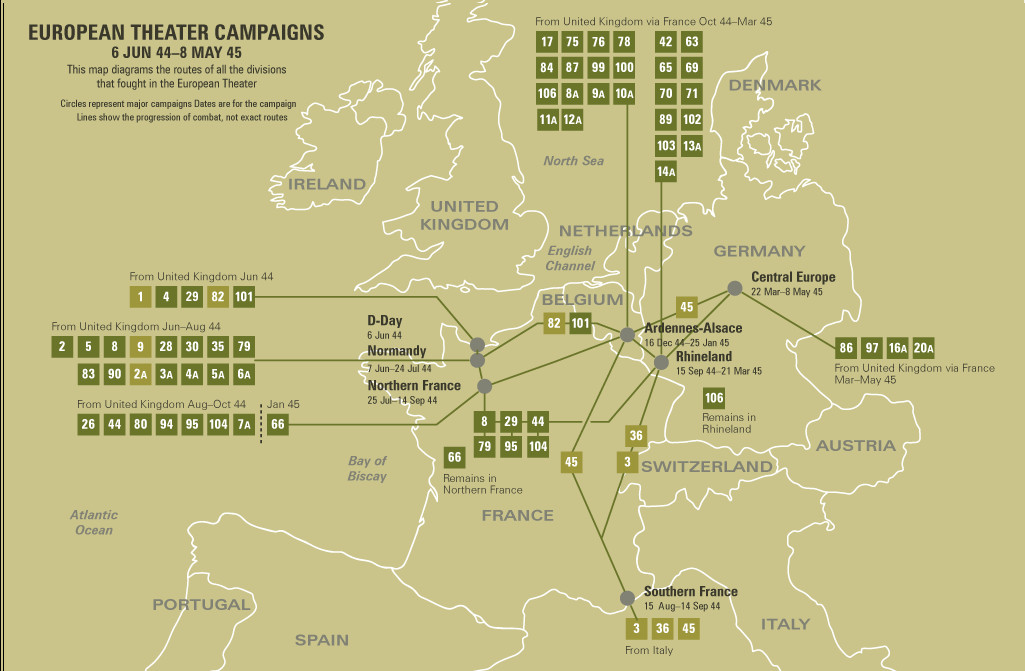 |
|
DIVISION CHRONICLEThe 101st Airborne arrived in England, 15 September 1943, and received additional training in Berkshire and Wiltshire. On 6 June 1944, the Division was dropped into Normandy behind Utah Beach. Against fierce resistance it took Pouppeville, Vierville, and St. Come du Mont. On the 12th, the stronghold of Carentan fell, and after mopping up and maintaining its positions, the Division returned to England, 13 July, for rest and training. On 17 September 1944, taking part in one of the largest of airborne invasions, the 101st landed in Holland, took Vechel and held the Zon bridge. St. Oedenrode and Eindhoven fell after sharp fighting on the 17th and 18th. Opheusden changed hands in a shifting struggle, but the enemy was finally forced to withdraw, 9 October. After extensive patrols, the Division returned to France, 28 November, for further training. On 18 December, it moved to Belgium to stop the German breakthrough. Moving into Bastogne under the acting command of Brig. Gen. Anthony C. McAuliffe, it set up a circular defense and although completely surrounded, refused to surrender on 22 December. Its perimeter held against violent attacks. The 4th Armored Division finally reached the 101st on the 26th and the enemy offensive was blunted. Very heavy fighting continued near Bastogne for the rest of December and January. On 17 January 1945, the Division moved to Drulingen and Pfaffenhoffen in Alsace and engaged in defensive harassing patrols along the Moder River. On 31 January, it crossed the Moder in a three-company raid. After assembling at Mourmelon, France, 26 February 1945, for training, it moved to the Ruhr pocket, 31 March, patrolling and raiding in April and engaging in military government at Rheydt and Munchen-Gladbach. The 101st reached Berchtesgaden by the end of the war and performed occupational duties until inactivation in Germany. |
CHRONIQUE DE DIVISIONLe 101st Airborne est arrivé en Angleterre, le 15 septembre 1943, et a reçu une formation supplémentaire dans le Berkshire et le Wiltshire. Le 6 juin 1944, la division est larguée en Normandie derrière Utah Beach. Contre une résistance féroce, il fallut Pouppeville, Vierville et St. Come du Mont. Le 12, le fief de Carentan est tombé, et après avoir nettoyé et maintenu ses positions, la Division est revenue en Angleterre, le 13 juillet, pour se reposer et s'entraîner. Le 17 septembre 1944, participant à l'une des plus grandes invasions aéroportées, la 101st débarque en Hollande, prend Vechel et tient le pont de Zon. St. Oedenrode et Eindhoven sont tombés après des combats acharnés les 17 et 18. Opheusden a changé de mains dans une lutte changeante, mais l'ennemi a finalement été forcé de se retirer, le 9 octobre. Après de longues patrouilles, la Division revint en France le 28 novembre pour suivre une formation complémentaire. Le 18 décembre, il a déménagé en Belgique pour arrêter la percée allemande. Déménagement à Bastogne sous le commandement de Brig. Général Anthony C. McAuliffe, il a mis en place une défense circulaire et bien que complètement encerclé, a refusé de se rendre le 22 décembre. Son périmètre tenu contre les attaques violentes. La 4e division blindée atteignit finalement la 101e le 26 et l'offensive ennemie fut émoussée. De très violents combats ont continué près de Bastogne pour le reste de décembre et janvier. Le 17 janvier 1945, la division s'est déplacée à Drulingen et à Pfaffenhoffen en Alsace et s'est livrée à des patrouilles de harcèlement défensif le long de la rivière Moder. Le 31 janvier, il a traversé le Moder dans un raid de trois compagnies. Après s'être rassemblé à Mourmelon, France, le 26 février 1945, pour s'entraîner, il s'installa dans la poche de la Ruhr, le 31 mars, patrouillant et faisant des raids en avril et s'engageant dans un gouvernement militaire à Rheydt et Munchen-Gladbach. La 101e a atteint Berchtesgaden à la fin de la guerre et a exercé des fonctions professionnelles jusqu'à l'inactivation en Allemagne. |
| SOURCE INFORMATION & PHOTO | Armydivs.squarespace.com |
|---|
|
Twin Brother of
|
Henderson Sherman BOGGS Jr | |
|---|---|---|
| ARMY SERIAL NUMBER | 34937971 |  |
| DATE OF BIRTH | 1919 | |
| STATE | TENNESSEE | |
| FAMILY | Married | |
| UNIT | -- | |
| JOB before ENLISTEMENT | Farm hands, general farms |  |
| DATE of ENLISTEMENT | 8 aout 1944 Fort Oglethorpe GEORGIA | |
| SOURCE INFORMATION & SOURCE PHOTO | Aad.archives.gov | |
| SOURCE INFORMATION & SOURCE PHOTO | Aad.archives.gov - Findagrave.com - Abmc.gov |
|---|---|
| PROGRAMMER | Henri, Garrett, Clive, Frédéric & Renaud |


